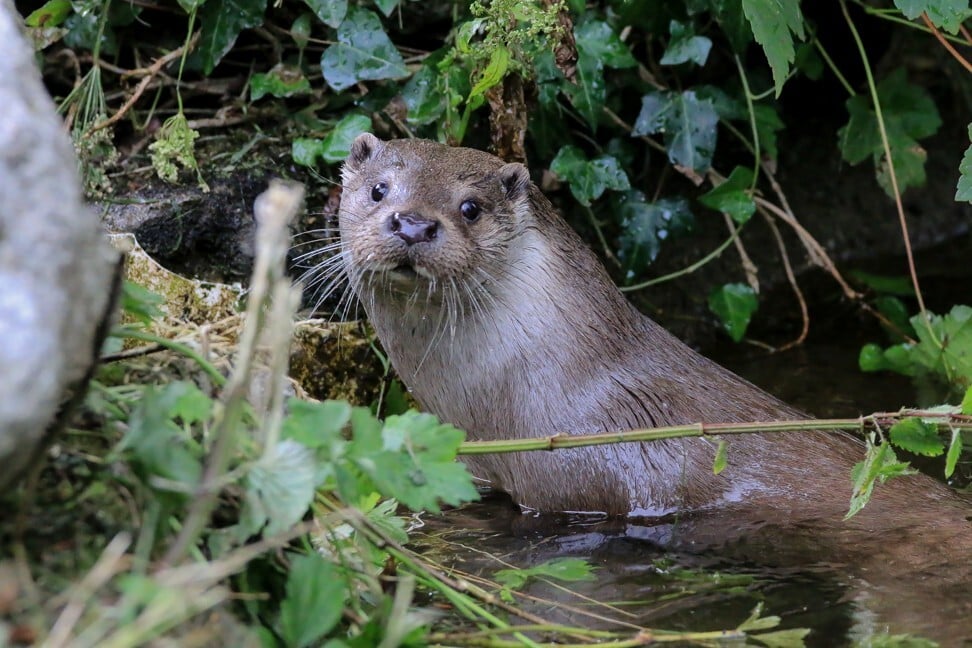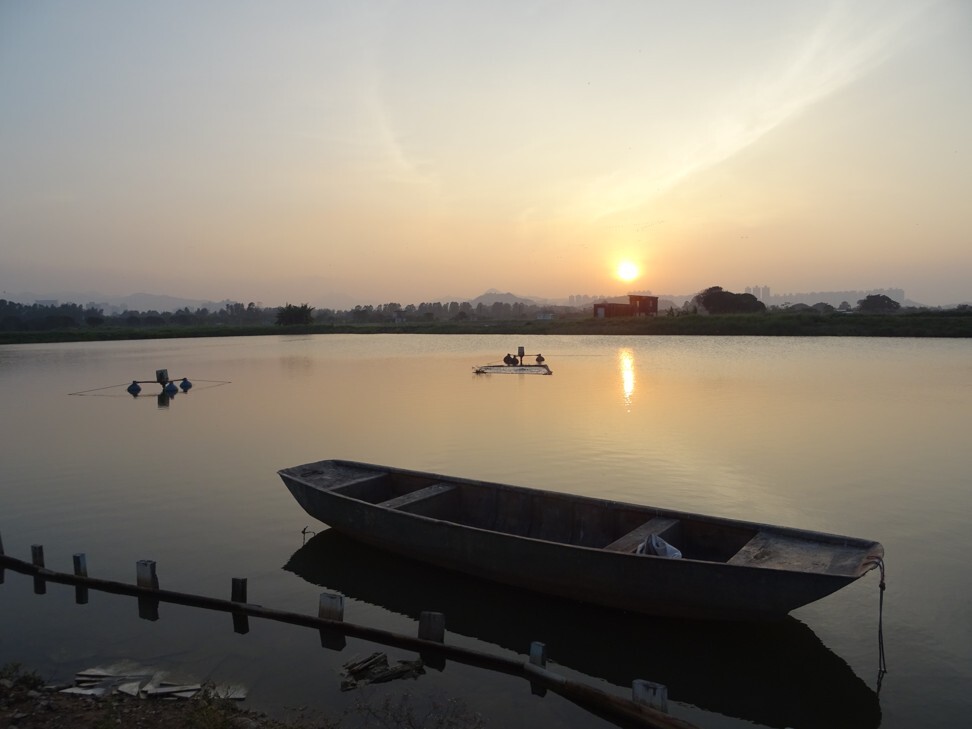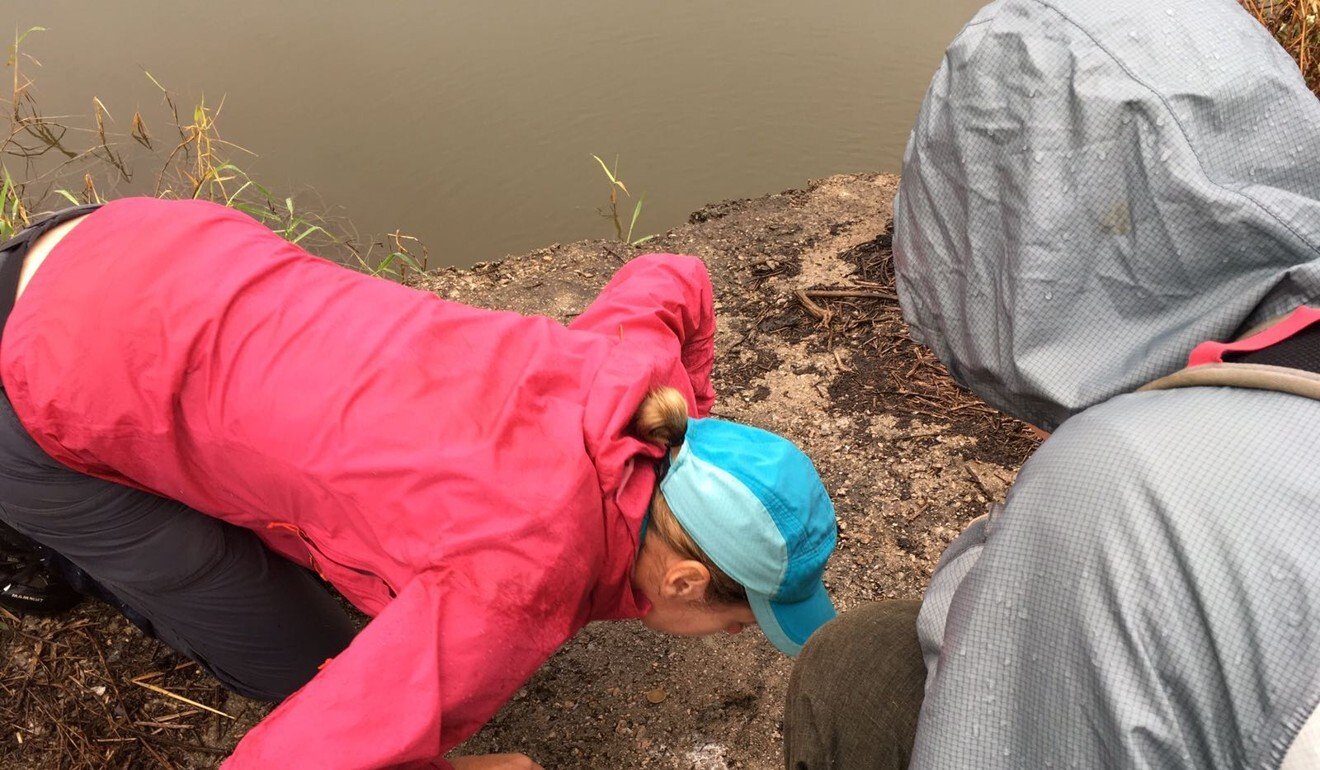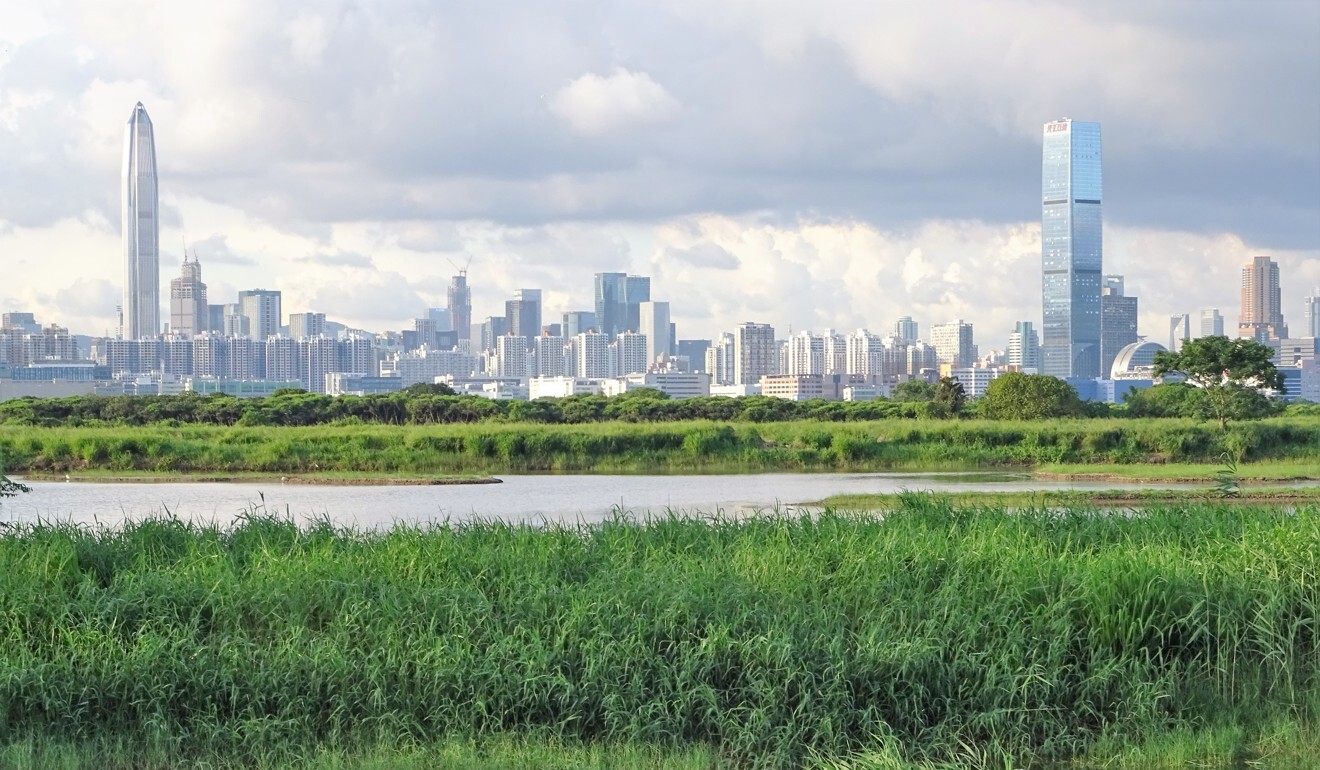
On the scent of otters in Hong Kong – secretive, nocturnal carnivores that are holding out in fish ponds
- Hong Kong’s otter population has declined over the past decades because of hunting and loss of habitat; they cling on in fish ponds near the Chinese border
- Conservationists trying to gauge their numbers have to rely on examining droppings for DNA; a farmer who 50 years ago saw otters often hasn’t seen one in years
An ancient Chinese classic describes how southern China’s Pearl River Delta was inhabited by “every kind and variety of strange beasts, so many, it is impossible to remember”.
Today, however, 50 million people live in the almost continuous concrete sprawl of cities including Hong Kong, Guangzhou, Shenzhen, Zhuhai, Foshan and Macau with a combined economy larger than that of South Korea. Humans have seen off most of the “strange beasts”, including tigers and alligators, but one predator is still hanging on – the Eurasian otter.
The mammal’s stronghold in the Pearl River Delta region are former wetlands that have been converted to fish farms along Hong Kong’s border with mainland China.
Growing up to a metre in length, otters are related to badgers and ferrets. They spend much of their time in the water, where they feed on fish, molluscs, crabs and frogs.

Once common from Spain to China, the hunt for otter pelts made the species extinct in many locations. In Guangdong province alone, more than 10,000 otters were hunted every year in the 1950s, records show.
In the middle of the 20th century, pesticides and loss of habitat reduced numbers even further, but now the Eurasian otter is making a comeback across Europe. In Hong Kong, however, the mammal’s situation is precarious, and there is an urgent need to learn more about them – which is difficult because they are nocturnal, solitary and territorial.
They prefer to communicate with each other from a distance with high-pitched whistles, and for a long time the only people aware of their existence in Hong Kong were the otters’ “landlords” who operated the fish ponds.
Why Hong Kong’s wetlands need a special committee for protection
“When we started our work in 2016, all we knew was they were here, and they were rare,” says Sharne McMillan, a PhD candidate in the School of Biological Sciences at University of Hong Kong. “The big fish pond area from Hong Kong Wetland Park to Lok Ma Chau Loop and Hoo Hok Wai is the core of the population of otters,” she says, referring to the northwestern part of the border region of Hong Kong adjoining China. Historical records show the otters once lived on Lantau and Hong Kong Island, she adds.
McMillan puts their demise in Hong Kong down to pollution and loss of habitat; being accidentally caught in fishing nets; and hunting for pelts and traditional Chinese medicine. The species has been protected in Hong Kong since 1976.

She is working to fill in the gaps in knowledge of Hong Kong’s otters – and it’s not glamorous work. “When people ask me what I do, I say I spend a lot of time collecting otter poo,” she says.
“I am embarrassed to say, but I have not seen a live otter in Hong Kong yet,” she adds, laughing. “But otter poo is also very interesting – as far as poo goes. It smells like a mix of fish and mown grass. Some have even suggested a slight aroma of jasmine tea.”

“We are aiming to complete this work in the coming months. We cannot give numbers at this point,” McMillan says. “The otter population in Hong Kong is very small.”
Other species’ DNA found in the droppings reveals what animals the otters eat, and an understanding of the diet is crucial, she says. The fish farmers may not mind providing free “accommodation” to the animals, but are far less happy about supplying them with free meals. Otters’ high metabolism makes them voracious eaters, and they love fish.
“It’s understandable. The farmers are concerned about their livelihood,” says McMillan, adding that the situation may not be as bad as they think. “It is not always the commercial fish they are eating, and otters also eat crabs and frogs.”

She plans to submit the data she has collected on the otters’ diet for scientific publication by the end of this year. Having shared their ponds and fish with the animals for decades, the fish farmers have come to know a lot about them, and this “local environmental knowledge” is valuable in conservation work.
“We interviewed more than 200 local people working in fish ponds. Many are 60 and 70 years old, and have lived there since they were children,” McMillan says.
The farmers offered a precise timeline of the otters’ decline. “I saw them in the 1970s and ’80s, rarely in the ’90s, and have not seen them since the 2000s,” one 60-year-old told MacMillan. They also provided descriptions of the dens – or couches – that otters build. Yet scientists have yet to see a single Hong Kong-made couch.

McMillan also conducted a survey of farmers’ personal views on otters and their protection. “The farmers are part of the solution to protect otters. We need to find a balance between their livelihood and conservation,” she says.
“Many [farmers] have a positive outlook about otters. But if you ask if they think otters should be protected, they become a little bit unsure: ‘Yes, it is OK to increase the numbers, as long as they don’t affect my fish stocks’.”
As long as there still are fish stocks to worry about, the otters are relatively safe. However, MacMillan says the current generation of fish farmers is elderly, and living next to the ponds watching over carp has little appeal to the younger generation. Additionally, local fish farmers are unable to compete against counterparts in China, and the trade is disappearing, and with it the otters’ habitat.

McMillan emphasises that for the effort to protect Hong Kong’s otters to stand a chance of success, the interests, needs and contributions of every party – scientists, NGOs, the authorities, the local people, and fish farmers – must be weighed up and taken into consideration.

The chances of seeing a live Eurasian otter in Hong Kong are almost zero, but the species is better off for it. Their gregarious, confident relatives – smooth coated otters, which roam Singapore – are now endangered thanks to their social behaviour.
About five years ago, videos of cute, playful otters of these two species flooded social media and triggered a slaughter of mother otters in the forests of Southeast Asia. Cubs taken from the dead mothers are shipped off to private flats and exotic-animal cafes in cities, mainly in Japan. Those that survive the journey live out their lives as human playthings, stressed and malnourished.
McMillan recalls exotic-animal cafes in Japan, where “otters were made to entertain humans for eight hours a day”, fed cat food and not given water to swim in. One baby otter, locked alone in a cage, was “calling continuously for the mother”.

“If you see a video of cute otters pop up on your Facebook, please, don’t repost it,” she says.
McMillan runs a Hong Kong Otters Facebook group to raise awareness of the city’s Eurasian otters – as the wild animals that they are. The group also publishes images – taken by infrared cameras installed in the wild – of these elusive predators.
Associate Professor Timothy Bonebrake, McMillan’s PhD supervisor, says these infrared cameras also regularly capture other inhabitants of Hong Kong’s fish ponds and wetlands.
“There is a wealth of hidden biodiversity here. Not just otters, but also leopard cats, mongooses, pythons, civets,” he says. “Strange beasts” are still around. They just need their habitat protecting.

